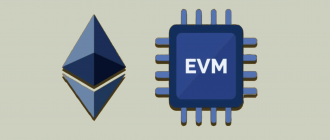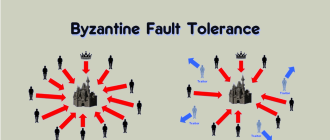In this article, we delve into blockchain technology, which has become the foundation of the cryptocurrency revolution, starting with the advent of Bitcoin and subsequently expanded by Ethereum and other projects. Blockchain has not only transformed the financial sector but also found applications in various other industries, including law, healthcare, and government, offering new ways to ensure transparency, security, and decentralization in data management.

Definition of Blockchain
Blockchain is a distributed database that maintains a continuously growing list of records, called blocks. Each block contains a cryptographic hash of the previous block, a timestamp, and transaction data. This structure ensures the reliability and immutability of data without the need for centralized control.
History of Blockchain
Blockchain was first implemented in 2008 as part of the cryptocurrency Bitcoin, described by Satoshi Nakamoto in his white paper. However, the ideas underlying blockchain, such as cryptographic hashes and distributed networks, were developed in the 1990s.
How Does Blockchain Work?
Blockchain consists of sequential blocks, each containing a batch of transactions, a timestamp, and the hash of the previous block. This setup creates a chain where each new block reinforces the previous ones, making the entire blockchain more resistant to unauthorized changes. Hashes are created using a cryptographic function, such as SHA-256 in Bitcoin, which converts the block’s input data into a unique string identifier of fixed length.
Mechanism for Adding Blocks to the Blockchain
The consensus mechanism is a key feature of blockchain that ensures the unity of network state among all participants. Proof of Work (PoW) requires participants to perform computationally intensive tasks to form a new block, which prevents spam and duplication of transactions. In Proof of Stake (PoS), the right to create blocks is proportional to the number of coins “staked” by participants. This reduces the resource consumption for mining and increases transaction speed while maintaining network security.
Mining and Miners
In PoW systems, miners compete to solve a cryptographic challenge, requiring significant computational resources. The first miner to solve the challenge has the right to add a new block to the blockchain and receives a reward in the form of coins and transaction fees. In PoS, validators are selected based on their coin ownership stake and random factors, significantly reducing the network’s energy consumption.
Transaction Validation
Before a transaction is included in a block, it must be verified by the network. This includes checking digital signatures to confirm the authenticity of senders and the sufficiency of funds. Once confirmed, transactions are broadcasted across the network and become part of the new block.
Blockchain Use in Cryptocurrencies
Blockchain serves as the basis for most cryptocurrencies, providing a decentralized and secure environment for transactions. In cryptocurrency blockchains, each transaction is recorded as a block of data, which is then cryptographically linked to previous blocks, forming a continuous and immutable chain. This ensures that all transactions are verified and accessible for inspection by all network participants.
Example of Popular Cryptocurrencies, Coins, and Tokens
Difference between Coins and Tokens:
- Coins (e.g., Bitcoin, Ethereum) are native currencies of their blockchains and are used to maintain network operations, pay transaction fees, and as a store of value.
- Tokens are created on existing blockchain platforms, like Ethereum, using token standards, e.g., the ERC-20 standard stablecoin USDT. They can represent various assets or utilities and be used in more specific applications, such as representing company shares, accessing platform functionalities, or as means for securing “smart contracts.”
Pros of Using Blockchain in Cryptocurrencies:
- Decentralization: No reliance on a central authority, reducing risks associated with centralized control and fraud.
- Security: Cryptographic encryption and consensus algorithms provide a high degree of security.
- Transparency: All transactions are recorded in the blockchain and accessible for verification, enhancing trust and transparency among participants.
- Resistance to Changes: Altering recorded data is nearly impossible without the approval of the majority of network participants.
Cons of Using Blockchain in Cryptocurrencies:
- Scalability: Many blockchains, including Bitcoin, face limitations in transaction processing speed, which may be insufficient for global financial systems.
- Resource Consumption: PoW algorithms require a significant amount of electricity, jeopardizing their environmental sustainability.
- Regulatory Environment Changes: Uncertainty in legal regulations can affect the acceptability and breadth of cryptocurrency use.
- Value Volatility: The high volatility of many cryptocurrencies can pose risks for investors and users.
Understanding these facets allows traders and investors to better navigate the complexities of cryptocurrency exchanges and choose suitable strategies and tools for managing risks.
What are Smart Contracts in Blockchain?
Definition of Smart Contracts: Smart contracts are autonomous programs stored on a blockchain that automatically execute, control, or document legally significant events based on predefined conditions. Their execution eliminates the need for intermediaries, enhancing security, transparency, and data immutability.

Key Features of Smart Contracts
How Smart Contracts Work:
Smart contracts are created using specialized programming languages, such as Solidity for Ethereum. Once the conditions are coded, the contract is uploaded to the blockchain, making every network node a carrier of its copy, ensuring decentralization. The contract automatically activates once its conditions are deemed fulfilled—be it reaching a certain date or receiving data from external sources, such as oracles.
Applications of Smart Contracts:
Smart contracts are utilized in various sectors, from financial services, where they can manage assets and automate payments, to supply chains, where they enable product origin tracking and inventory management automation. In real estate, smart contracts can update property records, significantly speeding up and reducing the cost of transactions. They are also applied in identification systems and voting, ensuring transparency and fairness of processes.
Advantages and Limitations:
Advantages:
- Cost and Time Reduction: Smart contracts reduce the need for intermediaries, cutting operational costs and transaction processing time.
- Increased Trust: Automation of processes and complete transparency in smart contract execution build trust among participants.
- Enhanced Security: The immutable nature of blockchain and cryptographic measures protect against fraud and external interference.
Limitations:
- Technical Complexity: High precision is required in the development of smart contracts, as errors in code can lead to serious financial losses.
- Legal Uncertainty: Smart contracts face legal challenges regarding their recognition and enforceability in different jurisdictions.
- Data Dependency: The quality and accuracy of data from external sources (oracles) critically impact the functionality of smart contracts.
Smart contracts transform many aspects of business interactions but require a thoughtful approach to development and implementation to maximize their positive effects and minimize risks.
Features of Distributed Ledgers
Technical Definition and Structure: Distributed Ledger Technology (DLT) consists of databases that are decentralized and managed by multiple participants (nodes), each holding an identical copy of all records. These records are synchronized and updated using various consensus algorithms. The distribution of data across many nodes enhances the system’s security and resilience to attacks and failures.
Advantages of Using Distributed Ledgers:
- Enhanced Security: Ledger data is protected by cryptography and distributed across multiple nodes, making it resistant to hacking and manipulation.
- Transparency of Operations: All changes in the ledger are visible to all participants and cannot be altered without consensus, ensuring a high level of transparency and trust.
- Automation Through Smart Contracts: DLT allows for the use of software codes, called smart contracts, which automatically execute under defined conditions, minimizing the need for intermediaries.
Disadvantages of Using Distributed Ledgers:
- Scalability Issues: High levels of data replication across many nodes can slow down transaction processing and increase response times of the system.
- High Resource Requirements: Consensus algorithms, especially PoW, require significant computational power and energy consumption.
- Technical and Legal Complexity: Managing and supporting DLT, along with a lack of established regulatory framework, can pose challenges for widespread technology adoption.
- Latency: The time required to reach consensus across all nodes can create delays, particularly in large and diverse networks.
Conclusion
Blockchain technology offers a revolutionary approach to data management that can radically transform not only the financial world but many other areas, from logistics to public administration. The development and implementation of blockchain solutions continue to grow as they provide efficient, secure, and scalable methods of information processing.







